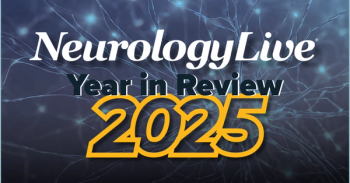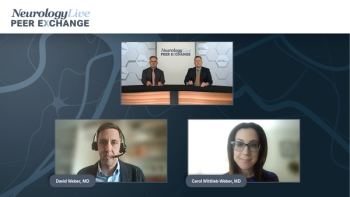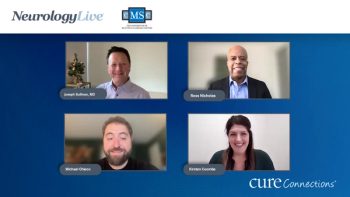
Helping Your Patients Avoid the Migraine Trigger Trap
Forget what you think you know about red wine or chocolate ‘activating’ migraine. Many commonly accepted “triggers” aren’t triggers at all.
Discussions about migraine treatment often revolve around a single topic: triggers. Patients with migraine are always eager to learn about factors that activate migraine in order to avoid them. Tracking and avoiding triggers is often one of the few means of control migraine patients feel they have over an otherwise unpredictable disease. However, this is an oversimplification. In practice, trigger avoidance is usually ineffective, and sometimes even detrimental to patients. That’s because:
- Many supposed “triggers” are not triggers at all, but rather are premonitory symptoms signaling an attack is already underway.
- Many triggers cannot be avoided.
- Rarely does a single trigger produce a migraine attack.
- Avoiding triggers can erode patients’ quality of life, since it can lead to avoidance of enjoyable activities1 as well as feelings of helplessness and self-blame.
Migraine Triggers Versus Prodromal Symptoms
Research has confirmed several triggers of migraine attacks:
- Menstrual changes are perhaps the most common migraine trigger among women. The drop in estrogen levels just prior to menses is likely the cause.2
- Fasting, including for religious reasons such as Ramadan3 or Yom Kippur.4
- Stress. Links between chronic stress, pain, migraine, and catastrophic thinking have been demonstrated by many studies.5,6 However, removing a stressful situation alone is unlikely to improve migraine. In fact, the abrupt cessation of stress is often itself a migraine trigger.7
- Weather changes. Many environmental factors may affect migraine (such as altitude, lightning, and barometric pressure changes) but the effects are relatively mild and in some cases nonsignificant.8,9
It’s important to emphasize that rarely does any single trigger invariably produce a migraine attack. Much depends upon the patient’s own migraine threshold, which fluctuates over time. For example, sudden changes in daily activity or environment increase migraine susceptibility,10 making triggers more potent than usual. This can be disorienting for patients, who may find that activities that were tolerable one day become triggering the next.
Further confusing for patients is the difficulty figuring out which of the events or symptoms that preceded a migraine attack was the trigger. This has led to a plethora of reported triggers, most of which have not been borne out by research. Rather, data supports the idea that many of these symptoms are actually premonitory, or prodromal symptoms,11 which occur 2 to 48 hours prior to the headache phase of a migraine attack.12 Seen in this light, such symptoms are not triggers that can be avoided; rather, they signal to the patient that an attack is already underway.
Common premonitory symptoms often confused for triggers include:
- neck pain
- light sensitivity13
- mood changes14
- food cravings
Chocolate is probably the best example of a food craving misunderstood as a trigger. Although patients rank chocolate number one of all food-based triggers, placebo-controlled studies have failed to show that chocolate triggers migraine.15 The same can be said of caffeine, an oft-cited food “trigger” that helps acute migraine.
Prodromal symptoms are individual to each patient. Identifying their prodromal symptoms can help a patient with migraine recognize that the headache phase is imminent, lessening the element of surprise and allowing them to take mitigation steps such as leaving work early, seeking out a dark room, notifying caregivers, or obtaining childcare for during the attack.
Reframing Triggers for Effective Migraine Treatment
Asking patients to avoid triggers does not appear to be effective, based on studies comparing the practice to a control group that didn’t change their behaviors. Trigger avoidance was also found less effective than cognitive therapy or an approach of learning to cope with triggers.16 Avoiding stress, for example, has been found less effective for chronic pain than coping or adaptive strategies and may lead to anxiety, increased disability, and catastrophic thinking.17,18
Focusing extensively on migraine triggers during an office visit is not only an ineffective use of provider-patient time, but it may also have a host of negative consequences on the person with migraine’s quality of life:
- Patients can feel blamed or self-blame for a migraine attack (e.g., “This is my fault because I drank wine”).
- A patient may find it impossible to identify their triggers, especially in those with very frequent attacks (where everything can appear to be a trigger) or infrequent attacks (where it’s difficult to find consistent patterns).
- The triggers identified may not be avoidable, such as stress or weather.
- Focusing on triggers can increase anxiety or lead to anticipation of attacks. It may even pave the way to more migraine attacks. Nocebo is a major problem in headache, both in clinical trials and practice.19 Studies of other pain disorders have shown that increased pain expectations cause an increase in symptoms20; the suggestion that a specific trigger will cause a migraine attack may create similar expectancy mechanisms.
- It does not address the underlying cause of the disorder.
With all this in mind, here are a few strategies when advising patients on triggers.
Ask them to keep a headache journal. Maintaining a regular diary or calendar eliminates recall bias and focuses on overall migraine control. It may also allow the discovery of unrecognized triggers amenable to treatment, such as caffeine withdrawal on weekends or menstrual migraine. In addition to tracking attacks, ask patients to write down strategies that worked, both preventively and abortively (medical and non-medical), to reduce their migraine symptoms.
Focus on healthy lifestyle choices that raise migraine threshold. Rather than trigger avoidance, focus on engaging in proactive behaviors that, done consistently, raise patients’ threshold for migraine triggers. Those include good sleep, regular nutrition patterns, regular exercise, and stress management techniques.
- For further practical details on healthy lifestyle changes that improve migraine, see my colleagues’ Stephen Silberstein, MD and William Young, MD’s article
“Lifestyle Changes for Migraine: Practical Tips for the Neurologist & PCP.” - To help patients understand the concept of threshold and their ability to raise their own migraine resistance level, try
this patient-centric article from Ctrl M Health .
Recognize and treat “cephalgiaphobia.” Ask patients if they worry about migraine when they are headache-free or restrict activities due to fear of migraine. Fear of migraine between attacks is an important predictor of chronification and medication overuse.21,22 Finding effective acute medication may reduce the risk of chronification.23 Cognitive behavioral therapy can be particularly effective.24 Patients with very frequent migraine—for whom triggers appear to be everywhere—may benefit from effective preventive medication.
Expect that patients will be new to the idea of replacing trigger-avoidance strategies with proactive behaviors. They will need encouragement and guidance to follow through. Until recently, evidence-based, expert-reviewed programs to help patients with lifestyle change for migraine were rare. That is a guiding reason why we at the Jefferson Headache Center and Thomas Jefferson University Hospital have partnered with Ctrl M Health, whose app-delivered program makes this information widely accessible.
Providers have the ability to help patients redirect their efforts into the factors within their control that are shown to actually make a difference. I find patients also benefit from the empowerment this behavioral approach brings, making them more confident in their ability to manage migraine. Those gains, in turn, allow them to continue making progress in reducing migraine frequency and severity, improving their quality of life.
The Jefferson Headache Center and Thomas Jefferson University have partnered with Ctrl M Health to create comprehensive, evidence-based programming and support for people with migraine. For free provider resources, best practice tips, and patient handouts, visit their
REFERENCES
1. Martin PR. Managing headache triggers: think ‘coping’ not ‘avoidance.’ Cephalalgia. 2010;30(5):634–7. DOI: 10.1111/j.1468-2982.2009.01989.x
2. Loder EW. Menstrual migraine: pathophysiology, diagnosis, and impact. Headache. 2006;46(Suppl 2):S55–60. DOI: 10.1111/j.1526-4610.2006.00555.x
3. Abu-Salameh I, Plakht Y, Ifergane G. Migraine exacerbation during Ramadan fasting. JHeadache Pain. 2010;11(6):513–7. DOI: 10.1007/s10194-010-0242-z
4. Drescher MJ, Elstein Y. Prophylactic COX 2 inhibitor: an end to the Yom Kippur headache. Headache. 2006;46(10):1487–91. DOI: 10.1111/j.1526-4610.2006.00609.x
5. Meng ID, Cao L. From migraine to chronic daily headache: the biological basis of headache transformation. Headache. 2007;47(8):1251–8. DOI: 10.1111/j.1526-4610.2007.00907.x
6. Kunz M, Chatelle C, Lautenbacher S, Rainville P. The relation between catastrophizing and facial responsiveness to pain. Pain. 2008;140(1):127–34. DOI: 10.1016/j.pain.2008.07.019
7. Lipton RB, Buse DC, Hall CB, Tennen H, Defreitas TA, Borkowski TM, et al. Reduction in perceived stress as a migraine trigger: Testing the “let-down headache” hypothesis. Neurology. 2014;82(16):1395–401. DOI: 10.1212/WNL.0000000000000332
8. Marmura MJ, Hernandez PB. High-altitude headache. Curr Pain Headache Rep. 2015;19(5):483. DOI: 10.1007/s11916-015-0483-2
9. Prince PB, Rapoport AM, Sheftell FD, Tepper SJ, Bigal ME. The effect of weather on headache. Headache. 2004;44(6):596–602. DOI: 10.1111/j.1526-4610.2004.446008.x
10. Martin VT, Behbehani MM. Toward a rational understanding of migraine trigger factors. The Medical clinics of North America. 2001;85(4):911–41. DOI: 10.1016/S0025-7125(05)70351-5
11. Schulte LH, Jurgens TP, May A. Photo-, osmo- and phonophobia in the premonitory phase of migraine: mistaking symptoms for triggers? J Headache Pain. 2015;16:14. DOI: 10.1186/s10194-015-0495-7
12. Becker WJ. The premonitory phase of migraine and migraine management. Cephalalgia. 2013;33(13):1117–21. DOI: 10.1177/0333102412437390
13. Maniyar FH, Sprenger T, Schankin C, Goadsby PJ. Photic hypersensitivity in the premonitory phase of migraine—a positron emission tomography study. Eur J Neurol. 2014;21(9):1178–83. DOI: 10.1111/ene.12451
14. Pavlovic JM, Buse DC, Sollars CM, Haut S, Lipton RB. Trigger factors and premonitory features of migraine attacks: summary of studies. Headache. 2014;54(10):1670–9. DOI: 10.1111/head.12468
15. Marcus DA, Scharff L, Turk D, Gourley LM. A double-blind provocative study of chocolate as a trigger of headache. Cephalalgia. 1997;17(8):855–62. DOI: 10.1046/j.1468-2982.1997.1708855.x
16. Martin PR, Reece J, Callan M, MacLeod C, Kaur A, Gregg K, et al. Behavioral management of the triggers of recurrent headache: a randomized controlled trial. Behav Res Ther. 2014;61:1–11. DOI: 10.1016/j.brat.2014.07.002
17. Ramirez-Maestre C, Esteve R, Lopez-Martinez A. Fear-avoidance, pain acceptance and adjustment to chronic pain: a crosssectional study on a sample of 686 patients with chronic spinal pain. Ann Behav Med. 2014;48(3):402–10. DOI: 10.1007/s12160-014-9619-6
18. Volders S, Boddez Y, De Peuter S, Meulders A, Vlaeyen JW. Avoidance behavior in chronic pain research: a cold case revisited. Behav Res Ther. 2015;64:31–7. DOI: 10.1016/j.brat.2014.11.003
19. Peris F, Donoghue S, Torres F, Mian A, Wober C. Towards improved migraine management: determining potential trigger factors in individual patients. Cephalalgia. 2017;37(5):452–63. DOI: 10.1177/0333102416649761
20. Becker WJ. The premonitory phase of migraine and migraine management. Cephalalgia. 2013;33(13):1117–21. DOI: 10.1177/0333102412437390
21. Peres MF, Mercante JP, Guendler VZ, Corchs F, Bernik MA, Zukerman E, et al. Cephalalgiaphobia: a possible specific phobia of illness. JHeadache Pain. 2007;8(1):56–9. DOI: 10.1007/s10194-007-0361-3
22. Giannini G, Zanigni S, Grimaldi D, Melotti R, Pierangeli G, Cortelli P, et al. Cephalalgiaphobia as a feature of high frequency migraine: a pilot study. J Headache Pain. 2013;14:49. DOI: 10.1186/1129-2377-14-49
23. Lipton RB, Fanning KM, Serrano D, Reed ML, Cady R, Buse DC. Ineffective acute treatment of episodic migraine is associated with new-onset chronic migraine. Neurology. 2015;84(7):688–95. DOI: 10.1212/WNL.0000000000001256
24. Grazzi L, Andrasik F. Non-pharmacological approaches in migraine prophylaxis: behavioral medicine. Neurol Sci. 2010;31(Suppl 1):S133–S5. DOI: 10.1007/s10072-010-0306-5
Newsletter
Keep your finger on the pulse of neurology—subscribe to NeurologyLive for expert interviews, new data, and breakthrough treatment updates.



















